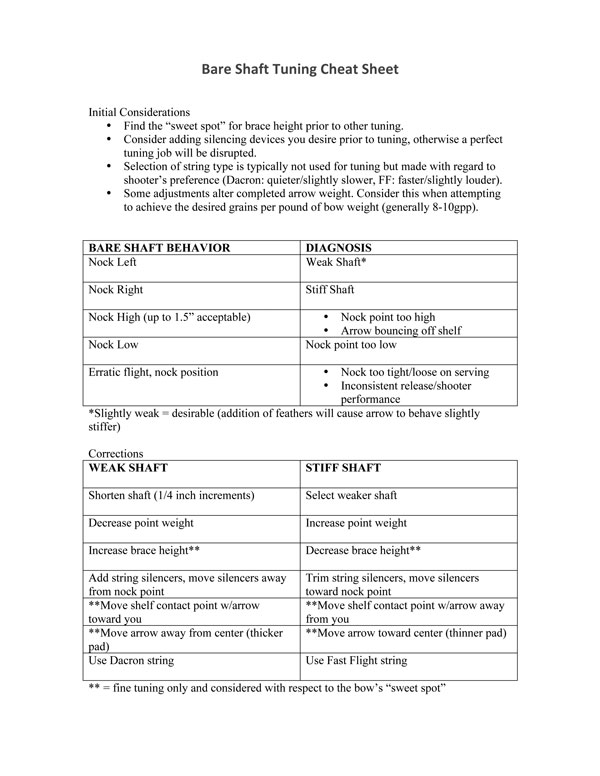Archery, and hunting in general, carry with them many points of satisfaction. Little compares to the sense of accomplishment associated with approaching a quarry downed at the hand of a well-placed arrow. Does the clock ever tick more slowly than during the wait after a well-placed shot?
Among the various times I swell with a slight sense of pride is when successfully tuning a set of arrows, particularly for a new set-up. Also, noticing ‘something’s up’ when the projectiles aren’t quite flying as well as normal and being able to monkey with the bow and/or arrows to alleviate the problem (or fixing my form). A bare shaft sporting a 90 degree entry and clustered among a well-grouped set of fletched shafts is particularly gratifying.
The average traditional archer not only enjoys the ‘tinkering’, but is quite proficient at it. However, the gigabytes in my mind often lack the capacity to store and recall without flaw the various adjustments that are possible to remedy different arrow flight issues. Finding myself frequently referring to various sources for the “I thought so” assurance when making adjustments, I created a cheat sheet for bare-shaft tuning. Sources are included and definitely can still be used when needed. Certainly many have their own favorite method of tuning and the chart is not intended to replace a personalized system. It is meant to serve as a quick reference for the traditional archer. Let’s face it, even the seasoned veteran suffers every so often from a brief bout of ‘dain bramage’.
Download this file, copy and laminate it, or slip it into a plastic sleeve and hang it in the workshop, garage or near your shooting range. Fold a copy in the tackle box you take to 3D shoots and/or hunting. Perhaps you have additions you could pencil in — by all means, be my guest. Best of luck and may your arrows
always hit your mark!!



Leave A Comment